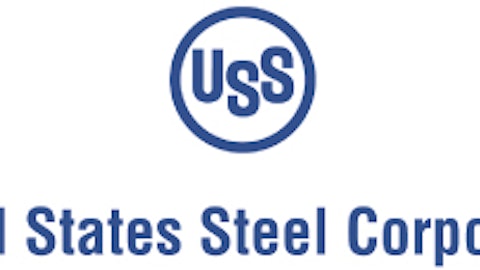
Here are three global steel producers which are battling out of the downturn through different strategies.
Drilling demands nullified by overcapacity
The shipments of United States Steel Corporation (NYSE:X)‘s tubular products stood at 1.88 million tons last year and are expected to increase by 2% this year. Drilling during oil extraction requires tubular products, and since there has been a recent increase in the price of natural gas and oil, the oil companies are increasing production. This will in turn increase the demand for tubular products.
Overcapacity in the tubular products segment is likely to hurt the company’s future pricing power, however. The supply and demand of tubular products corresponds with the number of rig counts because the rigs are the major user of these products. According to analysts, the number of rigs in North America will be 2,350 by 2016, which will lead to a demand of around 8.6 million tons of tubular products based on a consumption of 3,600 tons of tubular products per rig. This implies an increase of 0.9 million tons over the current consumption of 7.7 million tons.
Between 2013 and 2016, there are ten new tubular production facilities coming into operation in the U.S. These new mills will add 3.1 million tons to the current production capacity of 11.9 million tons, which could lead to a build-up of inventory. This build-up could stagnate prices at an average $1,000 per ton. This inflexibility in pricing is hurting United States Steel Corporation (NYSE:X) as its input costs are rising; as a result, the company’s cash flow is likely to be $295 million this year and improve marginally to $308 million next year.
The high-end demand and the forex fire
POSCO (ADR) (NYSE:PKX) is aiming to produce more high-end alloy steel. These products are increasingly required in the manufacture of automobile plates because of stringent regulation of pollution norms and driver safety. China imports 1 million to 1.5 million tons of high-grade steel from Korea and Japan for automobile manufacturing.
China is expected to produce 20 million vehicles this year, increasing to around 35 million by 2020. This rising demand will increase revenue for POSCO (ADR) (NYSE:PKX) because it produces high quality thermo-mechanical control process (TMCP) plates for cars. The production of auto steel plates is likely to be 8 million tons this year and 9.2 million tons by 2015.
POSCO (ADR) (NYSE:PKX) has to bear the negative impacts of the depreciation of the South Korean won due to its debt in the currency. The won is depreciating due to increased threats from North Korea and the sharp depreciation in Japanese yen. This weakening of won is expected to further reduce the company’s net profit by $434 million due to forex debt of $5.4 billion for the year 2013.
Reducing dependence along with innovation
ArcelorMittal (ADR) (NYSE:MT) is increasingly focusing on mining to reduce its dependence on its ore suppliers. It plans to increase its production in its Canada mines by 8 million tons per year (Mtpy), bringing it up to 24 Mtpy by the end of 2013. The expansion plan includes the development of a wholly-owned 420 km railway infrastructure. It estimates this to cost around $1.4 billion and allow greater access to the North American markets. This expansion is expected to boost the company’s revenue from mining to $5.71 billion this year and $6 billion next year, up from $5.39 billion last year.
The company is targeting the auto markets with its new ultra-lightweight car door. By combining advanced high and ultra high strength steel ArcelorMittal (ADR) (NYSE:MT) has been able to reduce the weight of baseline C-segment doors by 5 kg.
Current regulation in the U.S. and Europe demand more fuel-efficient and safe cars. According to company estimates, reducing the weight by 12 kg reduces carbon dioxide emission by one kilogram per kilometer. This product has potential access to around 67.19 million cars in 2013. The company expects revenue of its customized steel products to rise from $16.7 billion last year to $17.5 billion this year.
Conclusion
While some global steel companies are strengthening themselves by reducing external dependence on suppliers, others are waiting for the industry demand to improve.
United States Steel Corporation (NYSE:X) continued to suffer from the oversupply of tubular products and cannot take advantage of increased oil extraction activities in the U.S. POSCO (ADR) (NYSE:PKX), meanwhile, has a demand for its high-end alloy steel from automobile industry in China and is increasing its production but its exposure to the forex market has decreased its net profit due to the volatility of the Korean won. I recommend a hold for these two companies.
ArcelorMittal (ADR) (NYSE:MT)’s strategy of reducing its dependence on external suppliers for raw materials is on course. Its innovative car door is also a strong driver for revenue growth. I recommend a buy on the stock.
The article What to Do About Steel Investing originally appeared on Fool.com and is written by Shweta Dubey.
Shweta Dubey has no position in any stocks mentioned. The Motley Fool owns shares of ArcelorMittal. Shweta is a member of The Motley Fool Blog Network — entries represent the personal opinion of the blogger and are not formally edited.
Copyright © 1995 – 2013 The Motley Fool, LLC. All rights reserved. The Motley Fool has a disclosure policy.




